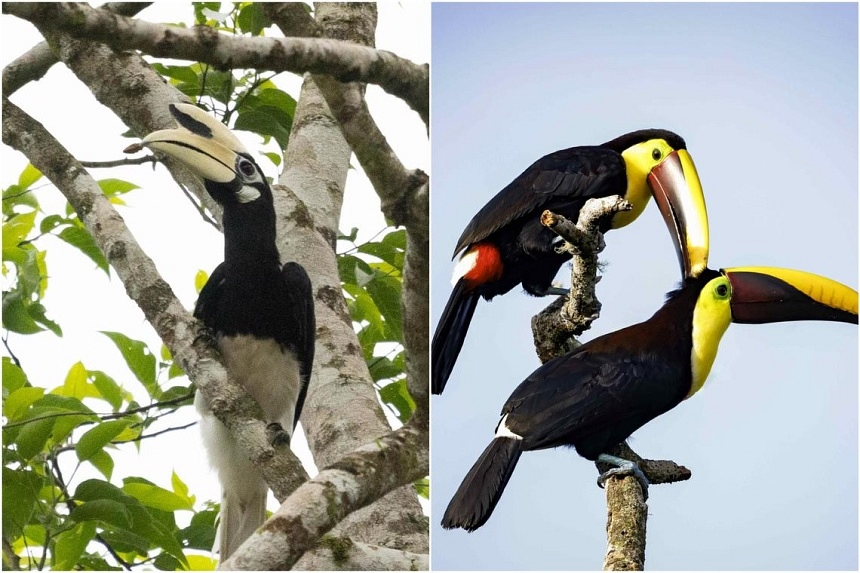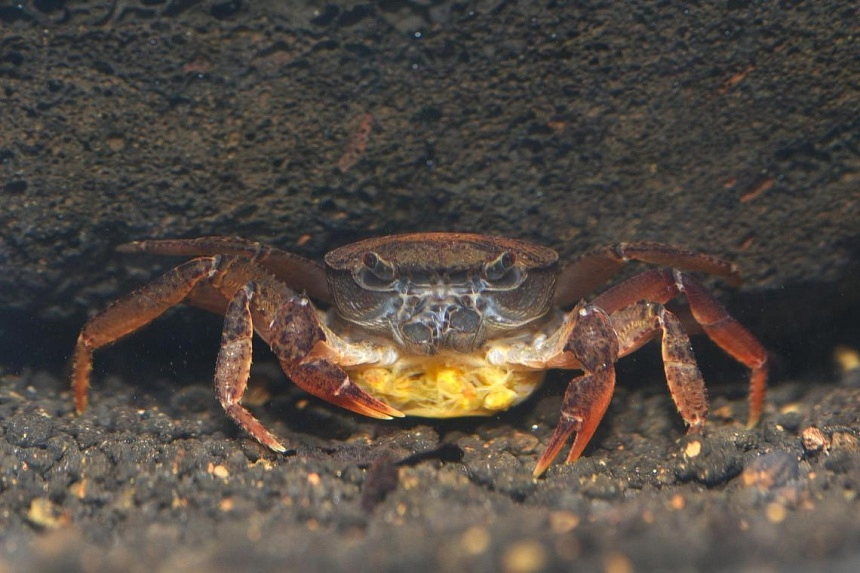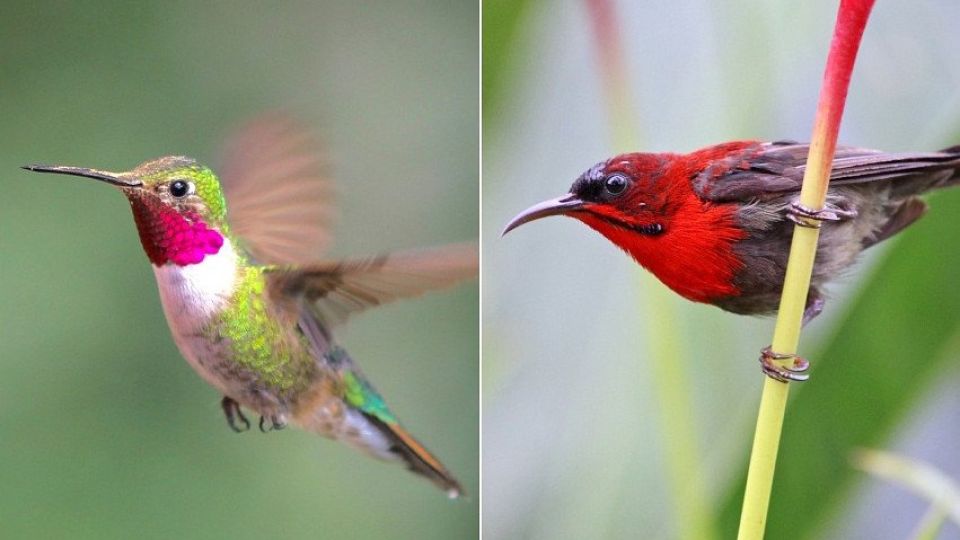October 21, 2024
SINGAPORE – By 2030, the National Parks Board (NParks) hopes to get students here to be more aware of Singapore’s native wildlife, such as sunbirds and hornbills – the local equivalents of hummingbirds and toucans, which are well-known birds found only in the Americas.
The effort to incorporate elements of native biodiversity education into school programmes – from primary school to pre-university – is one of 20 national targets that Singapore on Oct 20 submitted to the UN, ahead of the global body’s biodiversity conference taking place in Cali, Colombia, from Oct 21 to Nov 1.
This, and four other targets, had not been publicly announced before. The others are:
- Host or co-organise at least 10 more regional and international biodiversity-related events by 2030. The Republic hosted the semi-finals of international conservation technology competition XPrize Rainforest in 2023.
- Keep the proportion of wildlife traded illegally through Singapore each year to below 0.5 per cent. This refers to the number of illegal wildlife trade cases trafficked into Singapore or through Singapore over the total number of permits issued for the import or export of wildlife under a separate UN convention that regulates the trade in endangered species. This proportion has held below 0.5 per cent since 2015.
- Make available to the public 1,000 records of native plant species on Flora Fauna Web, an NParks-managed database of plants and animals.
- Ensure development in the country will remain subject to biodiversity-inclusive spatial planning under Singapore’s planning framework. Currently, development projects close to sensitive nature areas are already subject to greater scrutiny and may be required to carry out more detailed environmental studies. The submitted target solidifies this approach as one of Singapore’s strategies of balancing conservation with development.
The Urban Redevelopment Authority said on its website that the findings of all environmental studies are carefully considered in the planning evaluation process in order to determine the extent of potential impact and the adequacy of proposed mitigation measures, before a project is allowed to proceed.
As at Oct 20, Singapore has submitted 20 national targets, but NParks said it is still in the process of drafting more targets for the country. These targets will be part of Singapore’s revised National Biodiversity Strategy and Action Plan, which will be the country’s first update of its plan since 2019.
The biennial UN biodiversity conference, known as COP16, is the first one to be held since the Global Biodiversity Framework – often known as the nature equivalent of the Paris Agreement to tackle climate change – was adopted by almost 200 nations in 2022 at COP15.
The global framework outlines 23 targets for countries to work towards by 2030, in order to help stop and even reverse nature loss in the longer term. The UN has said that around one million animal and plant species are threatened with extinction. There is a target to restore 30 per cent of areas of degraded ecosystems, and to increase the area, quality and connectivity of green and blue spaces in urban and densely populated areas, as well as one to raise awareness and education in biodiversity.

Hornbills (left) are known as farmers of the forests as they play a crucial role in dispersing hundreds of fruit tree species. They are the local equivalent of the toucan, found only in the Americas. PHOTO: LIM JUN YING, EPA-EFE/THE STRAITS TIMES
Before they arrive in Colombia for COP16, countries were urged by the UN to submit new national nature conservation targets – dubbed National Biodiversity Strategy and Action Plans – that are aligned with the targets listed in the Global Biodiversity Framework.
But Mr Lim Liang Jim, senior director for international biodiversity conservation at NParks, noted that the targets in the Global Biodiversity Framework are global in nature, and countries are not required to achieve them individually.
“Countries set their own targets based on national circumstances which are relevant to them. We are updating our National Biodiversity Strategy and Action Plan and developing national targets that align with as many of the (global) targets that are relevant for Singapore,” he said.
Developed by NParks in consultation with relevant agencies and stakeholders, the 20 national targets are aligned with eight of the 23 targets in the global framework.
Other targets in Singapore’s submission include plans to conduct species recovery efforts for 100 plant species and 60 animal species by 2030, and to restore 80ha of forest, marine and coastal habitats across Singapore.
NParks’ species recovery programmes aim to conserve native flora and fauna by targeting endemic, rare or threatened native species in Singapore through reintroduction, habitat enhancement and protection efforts. Endemic species refer to those found only in Singapore.

The Johnson’s freshwater crab is found mostly in the streams of Bukit Timah and Central Catchment nature reserves. PHOTO: NPARKS/THE STRAITS TIMES
Examples of species that have benefited from such programmes include the Johnson’s freshwater crab, which is endemic to Singapore. It is found mostly in the streams of the Bukit Timah and Central Catchment nature reserves. NParks produced more than 300 of these crabs in captivity in 2023 and released some into the wild.
Singapore will be represented at COP16 by officers from NParks, an agency under the Ministry of National Development that oversees all aspects of nature conservation in the Republic.
Minister for National Development Desmond Lee said the Global Biodiversity Framework is an “ambitious but crucial step” towards greater global action to protect the world’s natural heritage, and that Singapore is committed to both national and global biodiversity conservation action.
He told The Straits Times the 20 national targets developed by Singapore so far are relevant to the nation’s unique local context as a small island city-state, and are complementary to its existing efforts.
“Many of these targets are aligned with our ongoing moves to transform Singapore into a City in Nature and safeguard our natural heritage, including efforts to restore and enhance habitats and species recovery plans.”
Asked about the significance of the national targets in promoting a better understanding of wildlife in Singapore, such as the effort to infuse more elements of native biodiversity into school programmes, Mr Lee said the country’s approach to biodiversity conservation is community-based and grounded in science.
“We must nurture a deeper understanding and appreciation for nature among Singaporeans, and cultivate a sense of stewardship,” he said. He added that incorporating native biodiversity elements into school programmes can impart green DNA to Singaporeans from a young age.
“We will also continue to consider biodiversity conservation and greenery in our land use and development plans,” he said.
Singapore recognises the need for collaboration in its biodiversity conservation efforts, and is committed to sharing its knowledge and expertise with its partners and the community on a regional and international level, he noted.
“We will lean forward to do so with a strong focus on nurturing youth in biodiversity conservation,” Mr Lee said.


